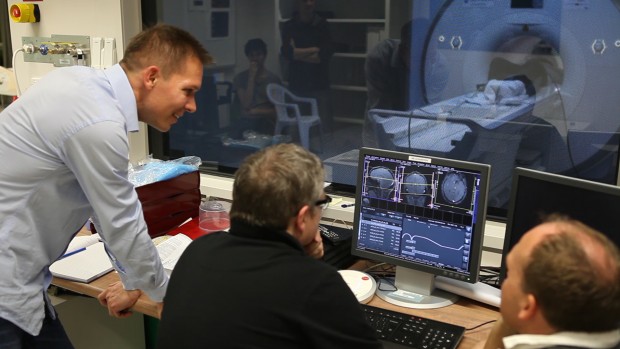How do we choose?

We’ve all heard of the marshmallow test, where children are presented with one gooey sweet and have the choice of eating it immediately or getting two if they wait for a short period. The test probes children’s ability to delay gratification and predicts many important life outcomes. But what do marshmallows have to do with economics? Carsten Murawski, co-head of the Decision Neuroscience Laboratory, argues that such simple experimental tasks can help us understand how we make big economic decisions.
Using behavioural and neuro-imaging experiments in combination with novel statistical techniques, the Decision Neuroscience Laboratory investigates fundamental aspects of decision-making to advance our comprehension of major financial, economic and health issues.
Just like the marshmallow test, reward-based decision-making is grounded in the concepts of delay and risk. Laboratory-based research isolates particular aspects of decisions and studies them using various experimental techniques to help us better understand the process of decision-making and factors that determine differences in behaviour between individuals.
“Combining tools from economics, psychology and neuroscience we are able to illuminate a wide range of phenomena in decision-making,” says Carsten. “We use modern tools to shed light on what information the brain extracts from its environment, where in the brain the information is processed and how various types of information affect decisions. This gives us a more elaborate picture of the decision-making process than traditional economic methods.”
The lab has conducted a series of research projects to investigate how seemingly irrelevant aspects of the environment affect financial decisions. In one study, participants were presented with two different images, each stimulating very different reactions, before being asked to make a financial decision. When participants were shown a picture of an empty cup, they were more likely to select to wait until a later date to receive a bigger reward, but when shown a picture of the Apple logo, they were more likely to choose a smaller but immediate financial reward. The short exposure to the Apple logo changed the state of the brain’s reward system in such a way that people chose more impulsively in the subsequent financial decision.
The team are currently studying what information the brain automatically extracts from its environment and how this information affects seemingly unrelated decisions. Insights from experimental investigation like this are used to help develop interventions for the prevention of obesity, pathological gambling and retirement savings decisions.
The Decision Neuroscience Lab is a collaboration between the Faculty of Business and Economics and the Faculty of Medicine, Dentistry and Health Sciences at the University of Melbourne, led by Carsten Murawski and Stefan Bode.


